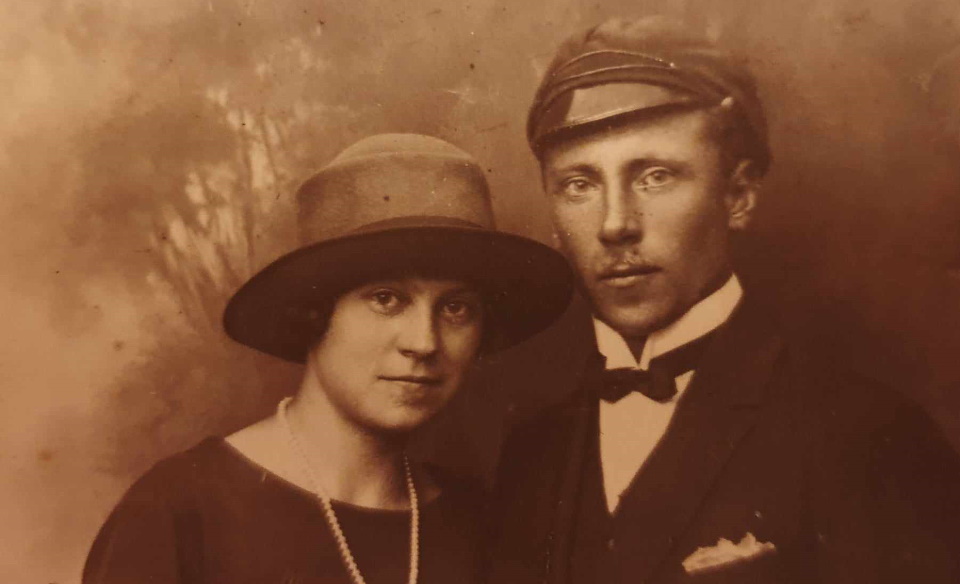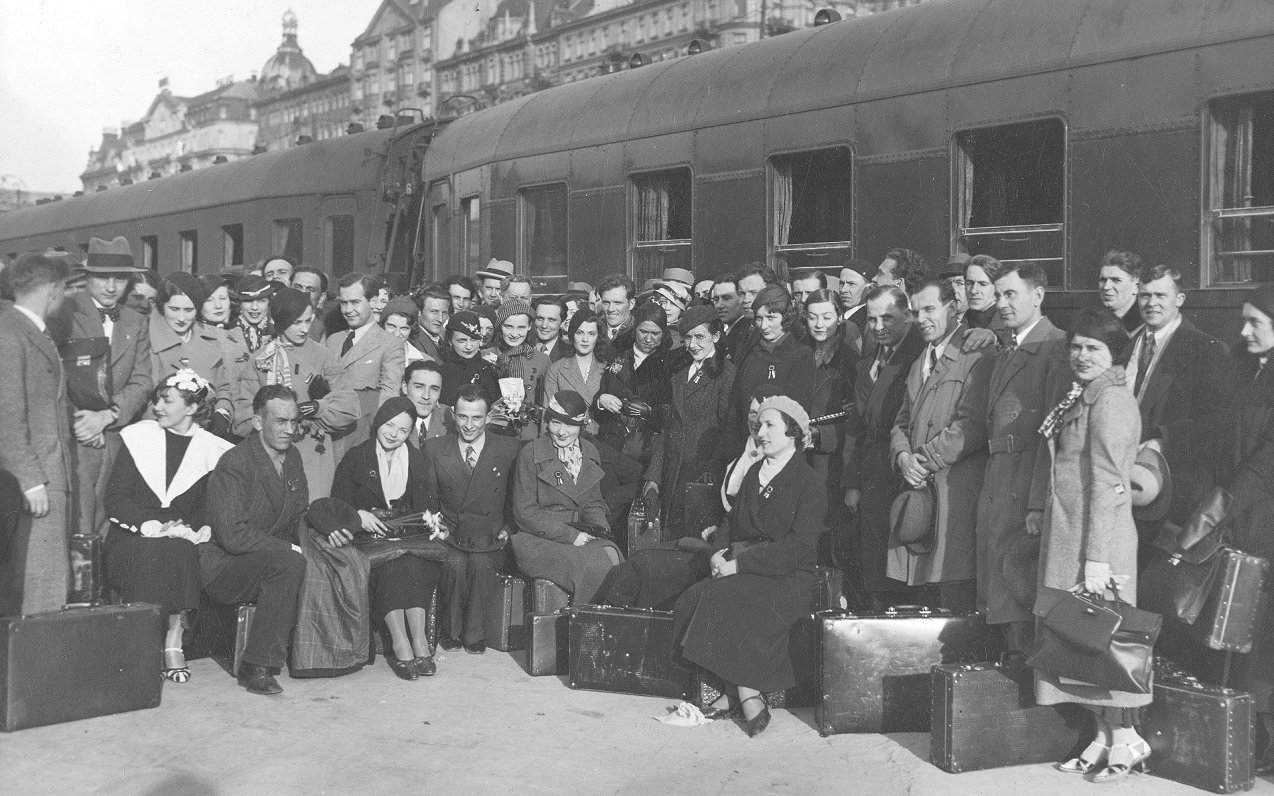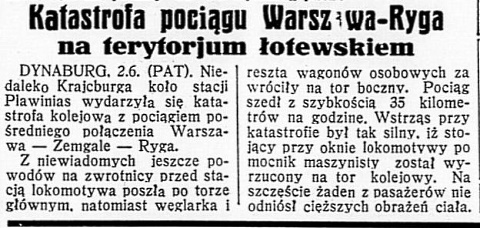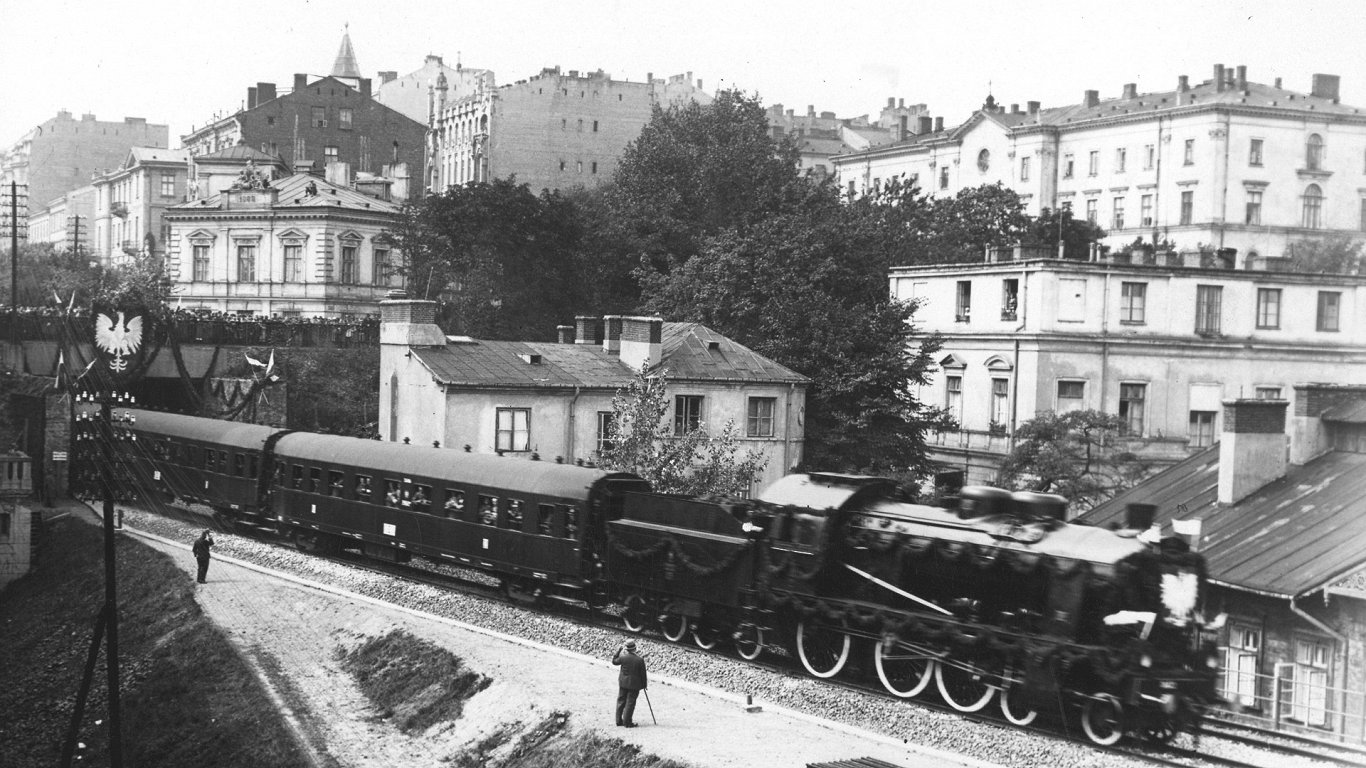When that does happen, it won't be for the first time.
This particular rail journey starts in 1862, when the Warsaw-Petersburg railway was built, which connected Daugavpils (Dvinsk) in south-eastern Latvia with the capital of Tsarist Russia, as well as with Vilnius and Warsaw. It was the second railway line in the lands of the then Kingdom of Poland, previously there was only the Warsaw-Vienna line that served the western part of Poland. Unlike that line (1435 mm), the Warsaw-Petersburg road was broad gauge (1524 mm) and, as the Warsaw "Railway Museum" emphasizes,
Soon the railway administration noticed that many people, when going from Warsaw to St. Petersburg, did not necessarily go directly on the Vilnius-Daugavpils side but took detours via Rīga.
After 1918, when Poland recovered and Latvia gained independence, but Vilnius and part of eastern Lithuania became part of Poland, the railway route Warsaw-Rīga (which was later extended to Tallinn) started from Daugavpils and continued through Malkinija, Bialystok, Grodno, Vilnius, all the way to the border at Turmont (Polish side) and Zemgale (Latvian side). Even before the conclusion of the Treaty of Riga, with which the eastern border of Poland was determined in March 1921, the socialist newspaper "Robotnik" ("Worker") announced:
"Regular traffic has been introduced between Vilnius (Wilno) and Warsaw: two trains a day. Information about traffic with Grodno will be available in the next few days. Trains to Riga will start running in a few weeks."
At the "Zemgale" border point people not only changed the time on their clocks (Poland and Latvia were in different time zones), but also switched from the Polish "narrow tracks" to the Latvian "wide tracks". Today it would resemble a transfer on the Polish-Lithuanian border, at the Mockava station, on the Krakow-Vilnius route, the first train of which was launched in December 2022.

Now let's consult the diary belonging to a Pole born in Liepāja, Józef Brodnicki, the ancestor of Michał Serafinowicz, whom I recently had the opportunity to meet at the opening of the Latvian Honorary Consulate in Gdańsk. Brodnicki repatriated from Latvia to Poland in 1922, he went by train from Liepāja to Kalkūni (via Riga and Daugavpils), but in Kalkūni he changed to a Polish train.
"Mother made me tea and gave me some bread (...) I was already buying a ticket to Kalkūni when Ignas came. So I asked for another ticket. Soon we all went out on the platform and chose a seat in the carriage (...) "Get on!", the conductor called followed immediately by a whistle. We were already in Riga. We were walking around the city, trying to exchange my Latvian money for dollars or pounds. We left at twelve o'clock at night, and even though the carriages were full, we found the upper bunks where we slept very well (...) In the morning we reached Daugavpils (...) in Kalkūni [Latvians] checked the documents and we bought tickets to Turmont. After half an hour we were in Polish territory (...) With the passengers going in the opposite direction I exchanged Latvian rubles for Polish marks. I received 30 Polish marks for one Latvian ruble."
In later years, the name of Kalkūni station was changed to "Zemgale". It was well remembered by the Polish writer Maria Dąbrowska, who is the author of the widely read book before the war "U pócznych sądzów" ("To the Northern Neighbors"), about the trip of Polish socialists to Latvia, Estonia and Finland. Dąbrowska, traveling north in July 1927, described the "Zemgale" railway station, where the Polish delegation enjoyed wild strawberries. However, it was necessary to wait three hours, which were taken by the transition from the "narrow tracks" of Poland to the "wide tracks" of Latvia. However, this also had its advantages.
"We got a huge 75% discount on the journey in this hospitable country. The Russian carriages were broad gauge, with raised sleeping boards. The houses and stations we passed gave the impression that I was traveling not from Poland, but across the borders of time. It seemed that I was in the era of fifteen years ago, somewhere near Siedlce or Łomża.
For the uninitiated: Siedlce and Łomża still belong to the less developed regions of Poland today.

Delegations of important Latvian and Estonian politicians traveled via the Latvian Zemgale and Polish Turmont stations (which is now located in Zarasi District, Lithuania). On the website of the National Digital Archive, we can find, for example, a photograph in which Polish and Estonian journalists can be seen in front of the Zemgale station, waiting for the Estonian Prime Minister, Otto Strandman.
Prime Minister of Latvia Marģers Skujenieks also entered Poland via Zemgale. According to documents from 1935, the train from Warsaw to Rīga left the main station three times a day: 9:55 a.m., 4:30 p.m. and 11:45 p.m. The times changed slightly later, but three connections a day were maintained until the outbreak of World War II.

Later, the route was the same as in the 20s (Polish-Lithuanian relations did not improve until 1938, so from Warsaw to Riga, unlike today, there was no possibility to go through Šiauliai and Jelgava). In 1932, the newspaper "Kurier Warszawski" ("Warsaw Courier") published information that the railway lines Warsaw-Riga, Warsaw-Prague and Vienna-Rome were coordinated with each other in terms of time, so now the trains "will serve traffic between the Baltic States, South and parts of Central Europe, in transit through Poland."
In 1938, "Kurier Warszawski" journalist Stanisław Biernacki went to Sigulda. Although there had been air traffic between Warsaw, Vilnius, Riga and Tallinn since 1932 (Five years later Helsinki was added to this list), the journalist decided to remain faithful to the railway.
"I have written so many bitter truths and harsh statements about the Polish state railway in my life that I felt somewhat confused when, sitting on the Warsaw-Zemgale-Riga train, I realized that the connections between Warsaw and Latvia and its capital have been significantly improved in recent years," noted Biernacki. "The Polish train (..) runs for hours without stopping. Its intended speed is about 80-85 km per hour, but looking at the time indicator and the passing kilometer poles, you can understand that the train is traveling at a speed of 100 km and more per hour (. ..) After a five-hour journey, Vilnius is already behind us, but the pace does not slow down even for a moment. At "Zemgale", the first Latvian station, there is an inspection and people change seats into broad-gauge trains, although they are not so well lit as ours. The Estonian second-class carriage is divided into compartments with sleepers, however, there is usually no water in the restrooms."
In September 1939, the Second World War began and the Polish-Latvian de facto border ceased to exist. Before this happened, King Zog of Albania crossed the border at Turmont and Zemgale, about which the Polish journalist and traveler Nikodem Szczyglowski recently wrote in "Przegląd Baltycki" ("Baltic Review"):
"On the night of July 12, 1939, an unusual guest was welcomed at the Vilnius railway station. It was the (at the time of the trip, already former) Albanian monarch from the distant, little-known, mysterious and exotic country in the south of Europe. 'An exotic guest in Warsaw!' read the press headlines. "King Zog in Vilnius, on the way to Riga." "
King Zog – the first and only Albanian monarch – visited the Latvian capital from July 13 to 17, 1939 after fleeing the Italian invasion of his homeland. From Rīga, he continued his journey by ship to Stockholm and then on to Norway, Belgium and France. After time spent living in exile in the United Kingdom, Egypt and the United States, he died in France in 1961.



























